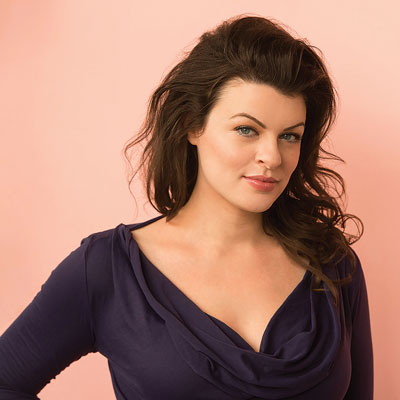Julia Adolphe

- Born: May 16, 1988, New York City
Crown of Hummingbirds
- Composed: 2022
- Premiere: These performances are the work’s world premiere.
- Instrumentation: SATB chorus, 2 flutes (incl. piccolo), 2 oboes, 2 clarinets (incl. bass clarinet), 2 bassoons (incl. contrabassoon), 4 horns, 2 trumpets, 3 trombones, tuba, timpani, bass drum, Chinese cymbals, glockenspiel, log drum, suspended cymbals, tam-tam, tom-tom, vibraphone, whip, wood block, harp, piano, strings
- Duration: approx. 15 minutes
Librettist Safiya Sinclair and composer Julia Adolphe have each written about their Crown of Hummingbirds. Sinclair says:
In this libretto, I wanted to explore a natural repetition of language as a mirror to its recurring imagery, which is grounded in the natural world. First, I imagined the voices, multitudinous and searching, reaching into the unknown, asking the larger philosophical questions about loneliness and the nature of existence and finding the answer to be Love. Love is what fights the dark of solitude. Love is what roots us in the light. From there, I imagined the love of family as its own kind of song. What would such a song sound like? I wanted to begin in darkness and doubt and end in a place of hope and wonder, uplifted and ecstatic, as I imagined all those who have come before us and those yet to come, singing our names. With each line, I threaded a tone of incantation or bright litany, weaving the imagery from a lone girl to a tender woman, finally to the crescendo of togetherness. There, in the place where we gather like hummingbirds, now—or in some memory after—no one is ever lost. No one is ever alone. This is the truest home, this sense of belonging, bathed in the voices of tomorrow’s sun.
Adolphe says:
Crown of Hummingbirds reveals the power of love, community, family and connection in the face of death, isolation and destruction. The music opens in a dark, chaotic realm, with voices emerging from a murky haze, striving toward color and light. The orchestra threatens to engulf the choir while the singers are fervently “reaching for meaning,” banding together in unified harmonies. As the choir perseveres, the music subsides, revealing a lone, meandering harp. The women’s voices sing of a new life, where wonder, beauty and creativity take root and flourish. “Starlight,” evoked with vibraphone, piano, harp, soft winds and pizzicato strings, is associated with the vibrancy of the imagination, the capacity for love and the pathway toward connection. The voices intertwine and swell, conveying the movement and growth of the “golden river of family.” As the poem moves toward the line “No one is ever lost,” the music shifts towards a sense of sparse isolation, then suddenly returns to the darkness of the opening material, consumed by the depth of loss. Faced with the resolve and unity of the choir, the orchestra ultimately transforms from a foreboding mass to a realm of brightness and light, swirling and soaring like a bird in flight while the singers deliver the poem’s final stanza. The orchestra fades once more to reveal the choir standing on its own, suggesting the intimate and vulnerable nature of love, hope and belonging.